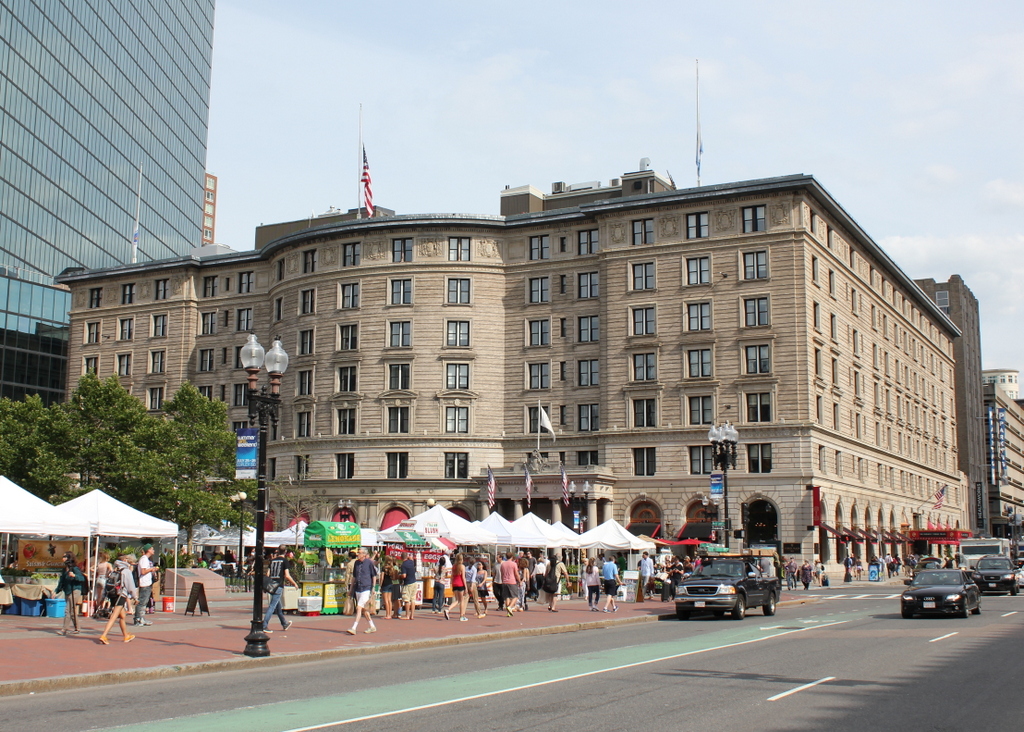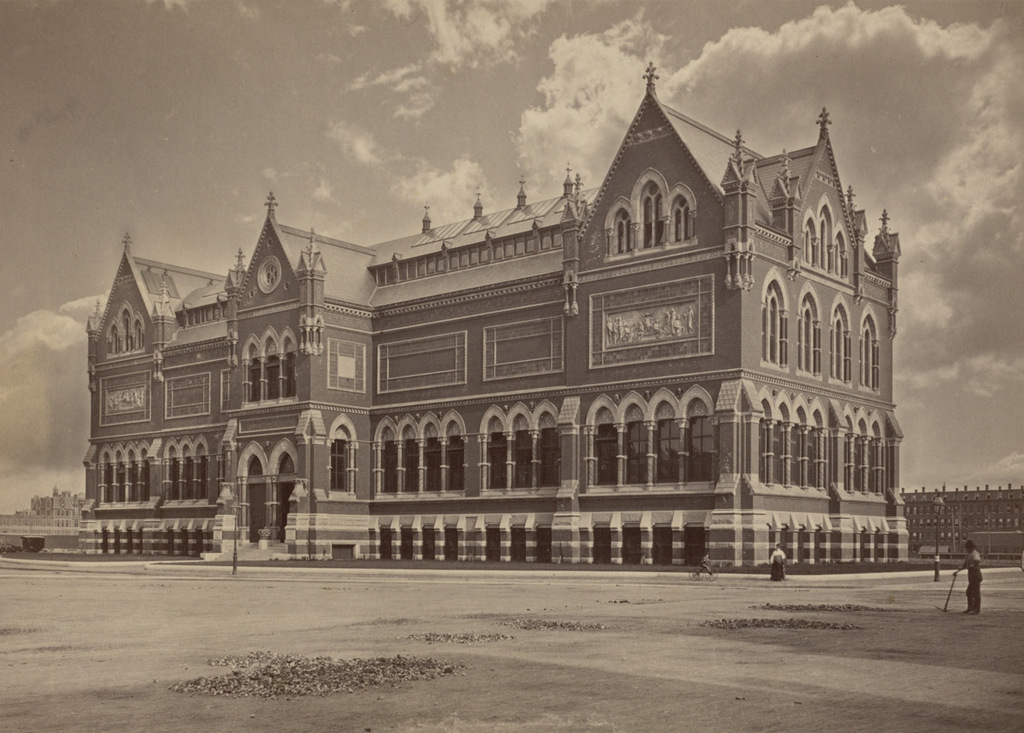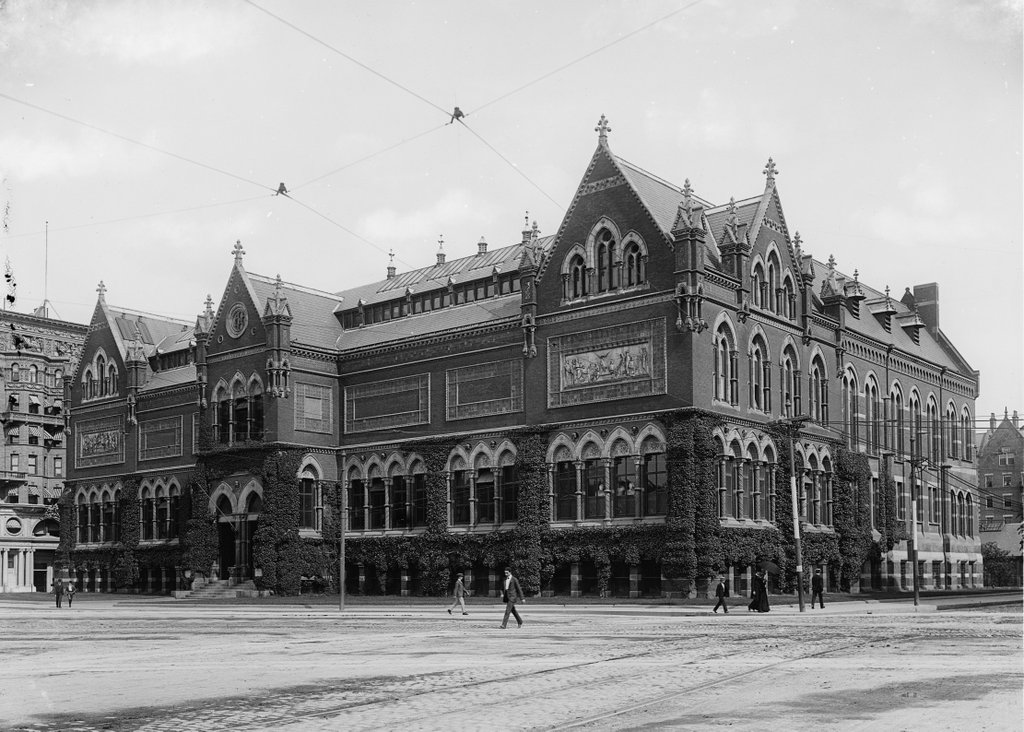The old Museum of Fine Arts building at Copley Square in Boston, probably sometime in the 1880s. Image courtesy of the Boston Public Library.
The building around 1890-1901. Image courtesy of the Library of Congress, Detroit Publishing Company Collection.
The location in 2015:

Boston’s Museum of Fine Arts was established in 1870, and six years later it moved into this Gothic Revival building on the south side of Copley Square. Because of the museum’s presence here, it was originally named Art Square, but in the 1880s it was renamed in honor of colonial Boston painter John Singleton Copley. The museum has a substantial collection of his works, including portraits of prominent figures such as John Adams, Samuel Adams, John Hancock, and Paul Revere.
In 1909, the museum relocated further down Huntington Avenue in the Fenway-Kenmore neighborhood, on a larger plot of land that allowed for more expansion as the museum grew. Today’s museum is many times larger than the original Copley Square building, and it is among the most visited art museums in the world, attracting over a million visitors each year. The old art museum was demolished soon after the museum moved, and in 1912 the Copley Plaza Hotel, which is still standing today, was built on the site.



Does anyone know why they demolished such a beautiful and fairly new building?
I was wondering the same and I guessed that either it became too small, or possibly the layout or construction posed a danger to people its contents. We had many buildings like this in Detroit that were demolished simply because they were built in the wrong place.
In any case, it certainly was a beautiful building.
Countless beautiful buildings were demolished in cities across the US decades ago, for reasons of profit, changing tastes, or so-called progress. The wrecking ball hit (among others) Pennsylvania Station and Gilded Age mansions in New York, the old MFA building and the opera house in Boston, and the entire west end of the city. Chauncy Street in Boston, now hemmed in by stores and loading docks, was once a street of genteel brick row houses with a park and a church. (I recommend the book, “Lost Boston” by Campbell.) Things change of course, but so many beautiful places have been obliterated and this continues to this day, despite preservation societies. You can, for example, buy an 18th or 17th century house in some New England towns and tear it down to make room for a swimming pool, or gut all period features from the interior and replace them with granite counter tops and track lighting.
Honestly, not every 17th or 18th century New England old house is worth saving, especially when there are major structural issues. Not everyone is made of money.